
Hand-woven carpets showcase intricate designs and rich history.
The history of hand-woven carpets and carpet weaving goes back thousands of years. Weaving carpets and rugs is known as an important art and craft in most cultures and ethnicities. The art of carpet weaving in Iran is known as one of the most important branches of handicrafts. Ancient evidence shows that carpet weaving has existed in Iran since ancient times. In the reflection of the ancient works, you can find hand-woven carpets with beautiful patterns and motifs in the hills and archaeological museums. Throughout history, the art of carpet weaving has been affected by cultural, social and political changes and has incorporated various patterns and designs.
Carpet weaving has a long history in other parts of the world. Since the beginning of civilizations, carpets and rugs have been woven in areas such as Central Asia, Kuzestan, Turkey, Afghanistan, India, China and Europe. Each region has gradually used its own patterns, motifs and techniques in the weaving of carpets and rugs. With the passage of time, the art of hand-woven carpets and carpet weaving was recognized not only as a beautiful and decorative art, but also as an important industry in societies. The weaving of carpets and rugs has not only been a source of income for people, but also a symbol of culture and art of a nation or region and has played an important role in cultural exchanges between different places.
The first carpets that can be seen as surviving examples in museums and archeologies date back to a very distant time and the exact date of their weaving cannot be verified. However, research and archeological evidence show that the weaving of carpets and rugs has been done thousands of years ago in different parts of the world. For example, in the region of Central Asia and Iran, ancient carpets with beautiful patterns and designs dating back to the Parthian, Sassanid, Seljuq and Ilkhanid periods have been discovered in the hills and archaeological museums. In other regions, such as Egypt, Turkey, Afghanistan and India, ancient carpets and rugs with special and diverse patterns have been discovered, which shows that carpet and rug weaving has been prevalent in these areas throughout history.
In the case of the oldest carpet ever discovered, precise and definitive information may not be available due to the lack of evidence and the limitations of the survivors. However, during long years of archaeological and artistic research, examples of ancient rugs and carpets have been discovered, which have been introduced as the oldest examples. One of the most famous examples is "Pazyryk Carpet". This carpet was discovered in 1949 in the Pazyryk hills in the Altai region of Siberia in Russia. Pazirisi carpet belongs to the Achaemenid period (about 500 BC) and is known as one of the oldest surviving carpets. This rug is woven from sheep's wool and features gorgeous floral and geometric patterns.
Also, examples of ancient rugs and carpets have been discovered in Egypt . Some of these examples belong to the Pharaonic period (about 2000 BC) and are woven using silk and wool threads. Since the old remains are very few and incomplete, it is difficult to determine the exact age of the surviving rugs and carpets. However, the Pazirisi carpet is one of the oldest examples in this area.
Undoubtedly, we have much less surviving carpets and rugs woven in ancient times compared to the examples woven in later times. But it is certain that the art of hand-woven carpet and carpet weaving is one of the oldest manual and industrial arts and has a long and fruitful history. Currently, the art of hand-weaving carpets and carpet weaving continues around the world, and artists and craftsmen in this field create beautiful and unique works by using traditional techniques and patterns, as well as by integrating modern innovations. Also, efforts are made to preserve and support this original and valuable art in order to develop and improve the quality of the works.
-
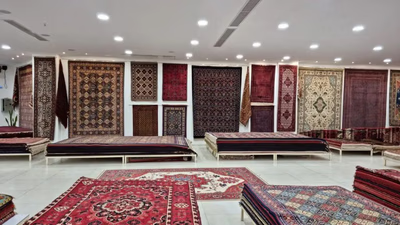
Carpets and rugs, while both classified as carpets, differ significantly in their preparation, design, and intended use. Carpets are typically made from materials such as cotton, wool, silk, or synthetic fibers and are characterized by a compact texture and high density. They are primarily used indoors for decorative purposes. In contrast, rugs have a more open texture and are often utilized in outdoor settings. The designs of carpets tend to be intricate and diverse, featuring floral patterns or geometric shapes that reflect regional cultures. Rugs usually exhibit simpler geometric designs. Both carpets and rugs are considered handicrafts that require artistic skills for their production. They embody cultural heritage through their unique motifs and materials sourced from local environments.
The marketing value of these items is significant; they serve as decorative pieces in homes and hotels or as souvenirs. Wool is a primary raw material for both carpets and rugs, with variations in the use of industrial threads for added durability. The dyeing process can involve natural or artificial colors depending on the method used. Overall, the craftsmanship involved in creating carpets and rugs highlights their importance as cultural artifacts.
-
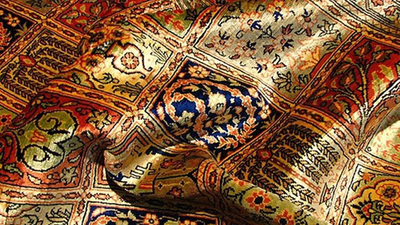
Carpet weaving is a significant cultural art form that preserves national identity and heritage. This traditional craft, recognized for its intricate designs and durability, has been passed down through generations. Each handwoven carpet reflects the unique skills of the weaver, showcasing artistic motifs and stories that embody cultural values. The process involves using simple tools and natural materials like wool and silk, requiring patience and precision. Handwoven carpets are not only valued for their aesthetic appeal but also for their economic significance in the arts and crafts market. They are often considered one-of-a-kind pieces due to their craftsmanship, making them highly sought after by collectors and enthusiasts alike. The art of carpet weaving continues to thrive across various cultures, adapting techniques while maintaining its traditional roots.
-
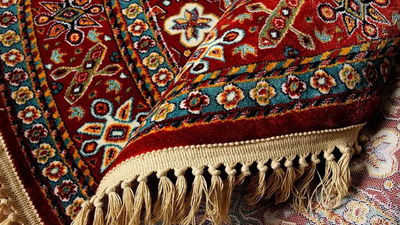
The global market for handwoven carpets is influenced by various factors affecting supply and demand. Economic conditions, price fluctuations, trade policies, and cultural preferences play significant roles in shaping consumer behavior. Countries like Iran, China, Turkey, Afghanistan, and India are key producers and exporters of these carpets. The American market is particularly important due to its diverse consumer base, including collectors and art enthusiasts. European countries such as Germany, France, England, and Italy also exhibit high demand driven by interior design trends. International exhibitions and auctions are crucial for connecting buyers with authentic products. Reputable sellers provide certificates of authenticity to assure buyers of quality. The appeal of handwoven carpets lies in their cultural significance and artistic value, making them desirable for interior decoration.
Buyers prioritize high-quality materials like wool and silk while seeking unique designs that reflect personal style. Environmental sustainability has become a growing concern among consumers who prefer natural materials with minimal ecological impact. Price remains a critical factor; buyers" willingness to pay varies based on quality, size, design complexity, and material used. "
-
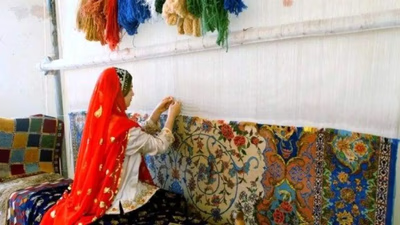
Verifying the authenticity of handwoven carpets is crucial due to their historical, artistic, and economic significance. Each region has unique patterns and designs that can help identify the carpet"s origin. Authentic carpets often feature natural colors that remain unchanged over time, and the materials used—such as wool and silk—are essential indicators of authenticity. Weaving techniques also vary by region, with specific methods, knot types, and densities providing clues to a carpet"s legitimacy. Notable tribes may include unique markings that further confirm authenticity. Consulting experts or reliable sellers is recommended for potential buyers to ensure they acquire genuine pieces. For instance, Hamadan carpets are recognized for their geometric patterns, while Qashqai carpets showcase intricate floral designs. Kashan carpets are distinguished by their diverse patterns and specific markings, whereas Isfahan carpets are celebrated for their artistic detail.
Ultimately, purchasing from reputable sources and seeking expert advice can significantly aid in verifying a carpet"s authenticity. "
-

The value of Middle Eastern handwoven carpets in international trade is influenced by various factors, including quality, design, size, materials, and production location. These carpets are often seen as cultural symbols, which can enhance their market value. Notably, Iranian carpets are highly regarded for their intricate designs and craftsmanship, while Turkish carpets are celebrated for their unique patterns and high-quality materials. Arabic carpets from the Persian Gulf region are recognized for their traditional designs and vibrant colors. Afghan carpets also hold significant value due to their diverse designs and high-quality wool. The price range for these carpets can vary widely, with some fetching millions of dollars as they are considered works of art. Economic conditions, demand and supply dynamics, cultural significance, and market trends all play crucial roles in determining the value of these rugs in global markets. Accurate valuation requires ongoing analysis of these factors to adapt to changing market conditions.
-
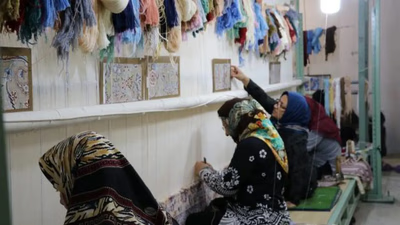
Hand-woven carpets have a rich history spanning thousands of years, with significant cultural and artistic importance across various regions. The craft is particularly prominent in Iran, where it has evolved through cultural, social, and political influences. Evidence of carpet weaving dates back to ancient civilizations in Central Asia, Turkey, Afghanistan, India, and Europe. Each region has developed unique patterns and techniques that reflect its cultural identity. The art form not only serves as a decorative element but also as a vital industry that provides income and fosters cultural exchange. Notable historical examples include the Pazyryk Carpet from the Achaemenid period, discovered in Siberia, which showcases intricate floral and geometric designs. Despite the scarcity of ancient carpets due to time"s passage, ongoing archaeological research continues to uncover significant artifacts that highlight the craft"s historical depth. Today, hand-weaving remains a vibrant practice worldwide as artisans blend traditional methods with modern innovations to create unique pieces while striving to preserve this valuable art form.






